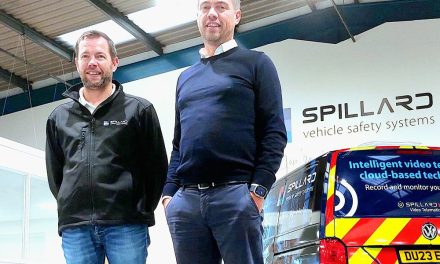 Leicestershire-based white light measurement specialist Phase Vision has partnered the Bluebird electric team to provide accurate measurement of the vehicle’s exterior using sine wave technology
Leicestershire-based white light measurement specialist Phase Vision has partnered the Bluebird electric team to provide accurate measurement of the vehicle’s exterior using sine wave technology
Small-scale manufacturing, not least in the automotive sector, brings its own specific set of technological challenges. This is especially the case when the vehicle is being designed and built to go beyond the boundaries of existing achievement in terms of speed.
In any area of vehicle manufacture – from family saloons to Formula 1 cars – tolerances exist between the intended design and the final vehicle. However, understanding the real shape of the vehicle allows a range of virtual testing activities to take place, not least finite element analysis (FEA) modelling. This assists significantly with an understanding of the vehicle’s aerodynamics, enabling design optimisation for both speed and safety.
Bluebird has for a 100 years been designing and building vehicles which have earned a unique place in automotive history through the many UK and world speed records it has set, with the company recognised as being at the pinnacle of performance engineering.
Its most recent target was to break the 500mph speed barrier for an electric vehicle and the tests which took place at Pendine Sands – site of many speed record attempts – on 13-14 August would give an indication of how close to that milestone the Bluebird Electric vehicle was. The fact that this is an electric vehicle is highly relevant to a society seeking to reduce fossil fuel usage in the light of both financial and environmental concerns.
The Bluebird Electric team worked with a number of suppliers on the vehicle design and build process, and recognising the importance of accurate measurement of the vehicle exterior, chose Leicestershire-based white light measurement specialist Phase Vision as its metrology partner for the project.
Phase Vision’s Quartz white light scanners use sine wave technology which projects a series of light stripes onto the object and uses an integral camera to develop a complete representation based on millions of points, to an accuracy of a few microns, in just a few seconds – far more rapidly than would be the case with a laser scanner or co-ordinate measuring machine.
Phase Vision’s equipment is designed to deliver rapid virtual representations of large and complex objects – the Bluebird Electric vehicle measures 21 feet – creating a densely populated point cloud containing many millions of points which is directly compatible with all major CAD software, meaning tasks such as finite element analysis and reverse engineering can be performed with both ease and accuracy. Equally the data can be reduced down to the few dozen points that a traditional CMM or measurement arm user expects to see – while gathering them more quickly, more reliably, and more cost effectively.
A further benefit of the scanning is it also allows for the first time the construction of precision models for sales as souvenirs and even model kits for enthusiasts.
Phase Vision’s delight in its selection as metrology partner to Bluebird has resulted in the company becoming an official sponsor of the Bluebird Electric project. The partnership will see Phase Vision scan a number of other historic Bluebird cars and boats.
Ralph Weir of Phase Vision comments: “Bluebird has been at the pinnacle of performance engineering for almost a century. As it moves into its centenary year, we are proud to be selected to support it with the most modern, high performance metrology systems available to the automotive and aerospace market today.”
Martin Rees, Bluebird project director adds: “It is difficult to capture accurate as-built data on a vehicle as large as Bluebird – which is 21 feet long and characterised by some complex aerodynamic shapes. As a result we did not have access to this data in our previous successful record-breaking attempts, and could not use it in the FEA analysis of the car. Using the Phase Vision Quartz scanner, we managed to capture that data quickly, and we will be using it to identify areas for improvement as we move towards the 500mph challenge car.”




